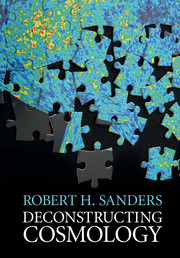Book contents
8 - MOND
Published online by Cambridge University Press: 12 October 2016
Summary
MOND (modified Newtonian dynamics) posits a drastically different approach to the problem of the observed mass discrepancies in astronomical objects. The idea is based upon a simple proposition: if the only evidence for dark matter on astronomical scales is its putative global dynamical or gravitational effects, then its presumed existence is not independent of the laws of dynamics or gravitation on those scales – that so long as no candidate dark matter objects or particles have been identified, then it is legitimate to look for alternative solutions to the discrepancy in modifications of Newtonian dynamics or gravity. Such a point of view is hardly radical at all but would seem to be a reasonable scientific approach. And yet, the very mention of “MOND” evokes strong reactions among astrophysicists and cosmologists; most of that reaction is not benign.
MOND is an acceleration-based modification of Newtonian dynamics or gravity. Now, many years later, it has been realized that in the deep MOND limit, for accelerations below a critical value, the theory reflects a very basic symmetry – a symmetry that is already evident in galaxy phenomenology – and that is where I begin.
Galaxy Phenomenology Reveals a Symmetry Principle
There are three aspects of galaxy phenomenology that seem unnatural in the context of cold dark matter. The first is that the rotation velocity beyond the visible galaxy approaches a constant fixed value; rotation curves are asymptotically flat. This flatness of rotation curves, shown so vividly by the example plotted in Figure 7.2, is a general feature of spiral galaxies – at least in those cases where there are no complications, such as nearby interacting companion galaxies or large distortions (warps) of the gas layer.
In galaxies of high surface brightness, there may be a gradual decline in the visible disk, but then, with increasing distance, the rotational velocity approaches its constant value. For low-surface-brightness galaxies, there is often a slow rise throughout the visible disk, but at larger distances the rotation velocity rises to a fixed value. This behavior is shown by the compilation of galaxy rotation curves in Figure 8.1; it is a general phenomenon.
Rotation curves are asymptotically flat as far out as they have been measured. They do not slowly rise; they do not slowly decline.
- Type
- Chapter
- Information
- Deconstructing Cosmology , pp. 96 - 114Publisher: Cambridge University PressPrint publication year: 2016



